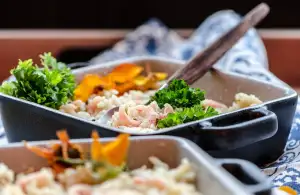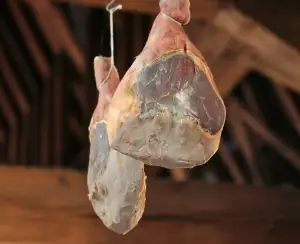Juicy Delights: Mastering the Art of Rare Steak - A Mouthwatering Recipe Guide

- Choosing the right cut of meat for a rare steak
- Preparing the steak for cooking
- Seasoning and marinating options for rare steak
- Cooking techniques for achieving the perfect rare steak
- Resting and slicing the rare steak
- Serving suggestions and accompaniments for rare steak
- Tips for achieving consistent results with rare steak
- Safety considerations when cooking rare steak
Rare steak is a culinary delight that showcases the true flavors and tenderness of high-quality beef. With its succulent juiciness and melt-in-your-mouth texture, rare steak is a favorite among meat lovers. The term "rare" refers to the doneness level of the steak, where the center remains pink or red with a warm exterior. This cooking method allows the natural flavors of the meat to shine through, creating a truly mouthwatering experience. In this article, we will explore the art of mastering rare steak, from choosing the right cut of meat to serving it up with delectable accompaniments. So get ready to tantalize your taste buds and embark on a journey to steak perfection!
Choosing the right cut of meat for a rare steak
Choosing the right cut of meat is crucial for achieving a perfect rare steak. Look for cuts that are tender and have good marbling, such as ribeye, filet mignon, or striploin. These cuts have just the right amount of fat to keep the steak juicy and flavorful during cooking. Avoid lean cuts like sirloin, as they tend to dry out when cooked rare. Remember, the quality of the meat will greatly impact the taste and texture of your rare steak.
Preparing the steak for cooking
Preparing the steak for cooking is a crucial step in achieving a perfectly cooked rare steak. Start by ensuring that the steak is at room temperature, as this allows for even cooking. Pat the steak dry with paper towels to remove any excess moisture, which can hinder browning. Next, trim any excess fat from the edges of the steak, leaving a thin layer for added flavor and juiciness. Finally, use a meat tenderizer or fork to gently pierce the surface of the steak, allowing marinades and seasonings to penetrate deeper into the meat. With these simple steps, you are ready to move on to seasoning and marinating options for your rare steak.
Seasoning and marinating options for rare steak
Seasoning and marinating options for rare steak can enhance the flavors and add an extra layer of deliciousness to your dish. When it comes to seasoning, keeping it simple is often the best approach. A generous sprinkle of salt and freshly ground black pepper can go a long way in bringing out the natural flavors of the meat.
If you're feeling adventurous, you can experiment with different herbs and spices to create a unique flavor profile. Some popular choices include garlic powder, onion powder, paprika, or even a touch of cayenne pepper for a hint of heat.
Marinating is another option to consider if you want to infuse your steak with additional flavors. A classic marinade consists of olive oil, soy sauce, Worcestershire sauce, minced garlic, and a squeeze of lemon juice. Letting the steak sit in this mixture for at least 30 minutes (or up to overnight) will help tenderize the meat and impart a savory taste.
Remember that when marinating or seasoning your steak, it's important not to overpower the natural taste of the meat. The goal is to complement rather than mask its flavors. So be mindful of the quantities and balance of ingredients used.
Whether you choose to season or marinate your rare steak, these options will elevate its taste and make each bite even more enjoyable. Experiment with different combinations until you find your perfect flavor profile!
Cooking techniques for achieving the perfect rare steak
When it comes to cooking a rare steak, the key is to achieve a beautifully seared exterior while keeping the interior tender and juicy. Here are some cooking techniques that will help you achieve the perfect rare steak:
1. Searing: Start by preheating a cast-iron skillet or grill pan over high heat. Season your steak with salt and pepper, then place it in the hot pan. Sear each side for about 2-3 minutes until a golden brown crust forms.
2. Oven method: After searing, transfer the steak to a preheated oven at 400°F (200°C). Cook for about 5-7 minutes for a medium-rare result, or adjust the cooking time according to your preference.
3. Reverse sear: This technique involves slow-cooking the steak in the oven first, then finishing it off with a quick sear on high heat. Start by baking the steak at a low temperature (275°F/135°C) until it reaches an internal temperature of around 125°F (52°C). Then, transfer it to a hot skillet or grill for a final sear.
4. Sous vide: For precise temperature control, consider using a sous vide machine. Vacuum-seal your seasoned steak and cook it in a water bath at 130°F (54°C) for about 1-2 hours. Finish by searing it briefly on high heat to develop a crust.
Remember that cooking times may vary depending on the thickness of your steak and desired level of doneness. Use an instant-read thermometer to ensure accuracy and avoid overcooking.
By mastering these cooking techniques, you'll be able to enjoy a perfectly cooked rare steak every time - tender, flavorful, and bursting with succulent juices.
Resting and slicing the rare steak
Resting the rare steak is a crucial step to ensure maximum juiciness and tenderness. Once cooked to perfection, remove the steak from the heat and let it rest for about 5-10 minutes. This allows the juices to redistribute throughout the meat, resulting in a more flavorful and succulent steak. Avoid cutting into it immediately as this will cause the juices to escape, leaving you with a drier steak. When ready to slice, use a sharp knife and cut against the grain for optimal tenderness. Take your time and savor each mouthwatering slice of this perfectly cooked rare steak.
Serving suggestions and accompaniments for rare steak
When it comes to serving rare steak, simplicity is key. The succulent flavors of the meat should take center stage, so it's best to keep the accompaniments minimal. A classic choice is a side of creamy mashed potatoes or a buttery baked potato. The rich and smooth texture of the potatoes complements the tender meat perfectly.
For a lighter option, consider serving your rare steak with a fresh green salad. The crispness of the greens provides a refreshing contrast to the richness of the meat. You can also add some roasted vegetables like asparagus or cherry tomatoes for added flavor and color.
If you're looking for something more indulgent, why not try pairing your rare steak with a rich red wine reduction sauce? The deep flavors of the sauce enhance the taste of the meat and create an elegant dining experience.
For those who prefer a bit of heat, serve your rare steak with a spicy chimichurri sauce. Made with fresh herbs, garlic, chili peppers, and olive oil, this vibrant sauce adds a burst of flavor and complexity to each bite.
No matter what accompaniments you choose, don't forget to garnish your plate with some fresh herbs like parsley or rosemary for an added touch of freshness and aroma. And remember, when it comes to serving rare steak, let the meat shine and enjoy every juicy bite!
Tips for achieving consistent results with rare steak
To achieve consistent results with rare steak, follow these tips:
1. Start with a high-quality cut of meat. Look for well-marbled steaks with a deep red color.
2. Let the steak come to room temperature before cooking. This ensures even cooking throughout the meat.
3. Use a meat thermometer to check the internal temperature. For rare steak, aim for 125°F (52°C).
4. Preheat your grill or pan to high heat. This will create a nice sear on the outside while keeping the center rare.
5. Avoid flipping the steak too often. Cook one side for about 3-4 minutes, then flip and cook for another 3-4 minutes.
6. Rest the cooked steak for at least 5 minutes before slicing. This allows the juices to redistribute and keeps it tender.
7. Invest in a good quality knife for slicing. A sharp knife will ensure clean cuts without tearing the meat.
8. Experiment with different seasonings and marinades to enhance the flavor of your rare steak.
By following these tips, you'll be able to consistently enjoy succulent and perfectly cooked rare steaks every time you prepare them!
Safety considerations when cooking rare steak
While rare steak can be a delicious and enjoyable culinary experience, it is important to consider safety precautions when preparing and cooking it. Here are some key points to keep in mind:
1. Quality of the meat: Always choose fresh, high-quality cuts of beef from a reputable source. Ensure that the meat has been properly stored and handled to minimize the risk of foodborne illnesses.
2. Cooking temperature: It is crucial to cook rare steak at a high enough temperature to kill any harmful bacteria present in the meat. The internal temperature should reach at least 145°F (63°C) for medium-rare doneness.
3. Proper handling: Practice good hygiene by washing your hands thoroughly before and after handling raw meat. Use separate cutting boards and utensils for raw and cooked foods to prevent cross-contamination.
4. Avoiding cross-contamination: Keep raw meat away from other ingredients, especially those that won't be cooked, such as salad greens or fresh herbs. Clean all surfaces, utensils, and plates that come into contact with raw meat with hot soapy water.
5. Storage: Store any leftover rare steak in the refrigerator within two hours of cooking. Consume it within three to four days or freeze it for longer storage.
By following these safety guidelines, you can enjoy the succulent flavors of a perfectly cooked rare steak while minimizing the risk of foodborne illnesses.
In conclusion, mastering the art of cooking a rare steak allows you to indulge in the succulent flavors and tender texture that this dish offers. By choosing the right cut of meat, preparing it properly, and using the right seasonings and marinades, you can enhance the natural taste of the steak. Cooking techniques such as searing and grilling help achieve that perfect pink center while ensuring a flavorful crust. Remember to let the steak rest before slicing it to retain its juiciness. Serve your rare steak with accompaniments like roasted vegetables or a creamy sauce to complement its rich flavors. With practice and attention to safety considerations, you can consistently enjoy the delightful experience of a perfectly cooked rare steak.
Published: 23. 01. 2024
Category: Recipes



